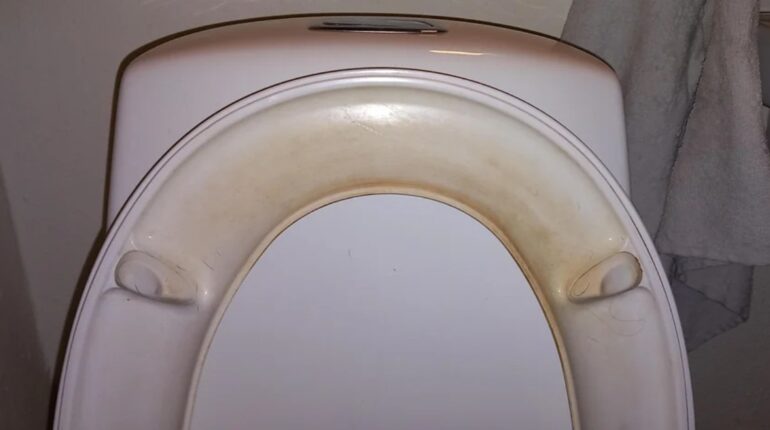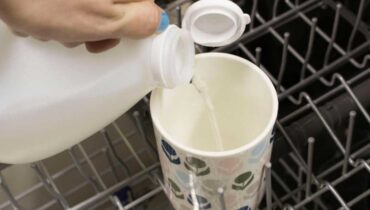📌 How to Remove Yellow Toilet Seat Stains & Clean Your Bathroom Like a Pro

Posted 9 August 2025 by: Admin
We’ve all been there — you walk into your bathroom, glance at the toilet, and see that stubborn yellow stain staring back at you. Whether it’s hard water marks, urine stains, or everyday grime, here’s the ultimate guide to getting your toilet seat and bowl spotless — and keeping them that way.
How to Remove Yellow Toilet Seat Stains & Make Your Toilet Sparkle Again
Few things can make a bathroom feel less clean than a stained toilet seat. Yellow marks, mineral deposits, and grime can appear even in well-maintained homes. Fortunately, with the right cleaning methods and a bit of consistency, you can restore your toilet’s fresh, like-new appearance. This guide covers the causes of stains, the best products to use, natural cleaning solutions, and expert maintenance tips to prevent future buildup.
Why Toilet Seat Stains Happen
Before choosing your cleaning strategy, it helps to know the cause:
- Hard water deposits – Minerals like calcium, lime, and iron can leave stubborn marks.
- Urine stains – If splashes aren’t cleaned promptly, they can leave a permanent yellow tint.
- Mold and mildew – Bathrooms are warm and humid, creating perfect conditions for growth.
- Everyday grime – Body oils, dust, and other residue can settle on surfaces over time.
Step-by-Step: How to Clean Toilet Seat Stains
1. Baking Soda + White Vinegar Paste (Natural Power Combo)
Mix baking soda with just enough vinegar to form a paste. Apply to the stains, let it sit for 10–15 minutes, then scrub with a sponge or old toothbrush. Rinse thoroughly. This is especially effective for urine-related discoloration.
2. Magic Eraser (Instant Brightening)
Lightly dampen a Magic Eraser and rub over the stained areas. This works well for surface stains and can restore a bright white finish in minutes.
3. Hydrogen Peroxide Soak (For Deep Stains)
Soak paper towels in hydrogen peroxide, lay them over the stains, and let sit for an hour. This light bleaching effect is safe for most plastic seats. Important: Do not mix peroxide with vinegar — rinse first if you’ve used vinegar earlier.
How to Remove Toilet Bowl Stains
1. Pumice Stone (Mineral Rings)
Wet the pumice stone and gently scrub mineral buildup. Avoid pressing too hard to prevent scratching porcelain.
2. Vinegar & Baking Soda Flush
Pour 1 cup vinegar into the bowl, then sprinkle baking soda. Let it fizz for 15–30 minutes before scrubbing with a toilet brush and flushing.
3. Borax Powder (Overnight Cleaner)
Sprinkle borax around the bowl, let it sit overnight, then scrub in the morning for a deep clean.
4. Bleach Tablets (Use with Caution)
Bleach can remove stains quickly, but overuse may damage porcelain or pipes. Never mix with vinegar or ammonia.
Cleaning the Outside of the Toilet
- All-purpose cleaner + microfiber cloth – Wipe down the tank, handle, seat edges, and base.
- Toothbrush for hinges and bolts – Perfect for removing hidden grime.
- Disinfect the floor area – Dust, hair, and droplets often accumulate at the base.
Bonus Toilet Cleaning Tips
- Deodorize your toilet brush holder with peroxide or bleach.
- Replace the seat if stains are permanent — it’s inexpensive and gives an instant refresh.
- Clean weekly to prevent buildup.
Final Thoughts
While cleaning a toilet may never be glamorous, maintaining a stain-free seat and bowl makes a huge difference in your bathroom’s overall appearance. With the right approach and regular upkeep, you can keep your toilet looking — and smelling — fresh all year long.
FAQs
1. What causes yellow toilet seat stains?
Hard water minerals, urine stains, and general grime are the most common culprits.
2. How do I remove deep yellow stains?
A hydrogen peroxide soak or baking soda + vinegar paste works for most cases.
3. How often should I clean my toilet seat?
At least once a week, or more often in high-traffic bathrooms.
4. Can I use bleach on my toilet seat?
Yes, but sparingly, as it can degrade plastic over time.



















